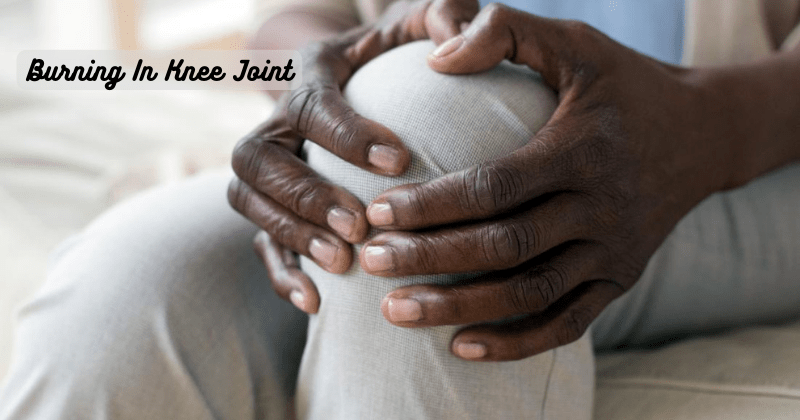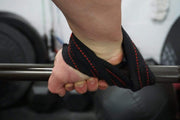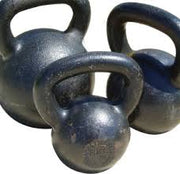Experiencing a burning sensation in the knee joint can be a distressing and uncomfortable symptom. This sensation can vary in intensity, ranging from a mild heat-like discomfort to a more severe, persistent burning pain.
Burning in the knee joint can be caused by various factors, including inflammatory conditions such as rheumatoid arthritis or osteoarthritis, traumatic injuries like ligament tears, and overuse or repetitive strain injuries such as runner's knee. It is essential to understand the underlying causes of this symptom and seek appropriate medical attention for diagnosis and treatment.
In this article, we will explore the common causes, symptoms, and potential treatment options for burning in the knee joint, aiming to provide valuable insights and promote optimal recovery.
Definition of Burning Sensation In The Knee Joint
A burning sensation in the knee joint is described as an uncomfortable feeling of heat or warmth that can occur in one or both knees. Other symptoms, such as tenderness, stiffness, swelling, and redness, often accompany it. The intensity and duration of the burning sensation may vary depending on the underlying cause.
Knee-burning pain can be constant or intermittent and may worsen with weight-bearing activities such as walking, running, or climbing stairs. In some cases, the burning sensation may also radiate to other parts of the leg or foot. Burning knee pain can significantly impact an individual's quality of life, limiting their ability to perform daily tasks and participate in physical activities.
The Location of Your Burning Knee Pain
The location of the burning sensation in the knee joint can provide valuable clues about its underlying cause. Let's take a closer look at some common locations of knee-burning pain and its potential causes.
Front of the Knee:
If you experience a burning sensation in the front of your knee, it could be due to conditions such as patellofemoral pain syndrome (PFPS), also known as runner's knee. This condition is characterized by cartilage irritation on the back of the kneecap, leading to pain and discomfort in the front of the knee. It is a common overuse injury among runners and can also be caused by activities involving repetitive bending and knee straightening, such as cycling or squatting.
The side or Outside of Your Knee:
Burning pain on the side or outside of the knee may indicate iliotibial band (IT band) syndrome. This condition occurs when the IT band, a thick band of tissue that runs along the outside of the thigh from the hip to the shin, becomes inflamed and irritated. It is often seen in runners and other athletes who engage in repetitive knee-bending activities.
The Back of Your Knee:
A burning sensation in the back of the knee can result from conditions like Baker's cyst or popliteal cyst. This fluid-filled swelling forms behind the knee and can cause pain, stiffness, and discomfort. It is commonly associated with underlying knee joint issues, such as osteoarthritis or meniscus tears. Iliotibial band syndrome and hamstring injuries can also cause burning pain at the back of the knee.
Throughout the Knee:
If you experience a burning sensation throughout your knee joint, it may be due to an inflammatory condition such as rheumatoid arthritis or gout. These conditions can cause widespread inflammation and pain in the knee joint.
Why Is My Knee Burning? The 7 Common Causes of Burning Knee Pain
Now that we've explored the different locations of burning knee pain let's dive into some common causes of this symptom.
Trauma:
A traumatic injury to the knee, such as a ligament tear or fracture, can cause intense burning pain. This type of injury typically occurs during high-impact activities or accidents and requires immediate medical attention. Knee ligament tear injuries can also result from repetitive strain or overuse, leading to a burning sensation in the joint. Knee ligament repair surgery involves rebuilding the damaged ligament using a tissue graft.
Osteoarthritis:
A degenerative joint disease characterized by the breakdown of the cartilage in the knee joint. As the condition progresses, it can cause burning pain, stiffness, and limited range of motion. Chronic knee pain is a hallmark symptom of osteoarthritis. To fix knee cartilage tear surgery, a surgeon will remove or repair the damaged cartilage to relieve pain and restore function.
Rheumatoid Arthritis:
A chronic inflammatory disease primarily affects the joints and can cause burning pain in the knees. In addition to pain and discomfort, rheumatoid arthritis can lead to swelling, stiffness, and deformity of the knee joint.
Overuse Injuries:
Repetitive strain or overuse of the knee joint can lead to conditions such as patellofemoral pain syndrome and iliotibial band syndrome, causing a burning sensation in the knee. These knee injuries are commonly seen in athletes and individuals who engage in activities that involve repetitive knee movements.
Overuse injury can also occur from improper form during physical activities. Patellar Tendinitis, also known as jumper's knee, is another overuse injury that can cause burning pain in the front of the knee.
Gout:
A type of arthritis caused by the buildup of uric acid crystals in the joints. Gout can cause a burning sensation in the knee joint and other symptoms such as swelling, redness, and tenderness.
Gout attacks can be triggered by factors such as diet, alcohol consumption, and certain medications.
Chondromalacia Aka, “Runner’s Knee”:
A condition occurs when the cartilage on the back of the kneecap becomes damaged or worn down. This can cause burning pain in the front of the knee, especially during activities that involve bending and straightening the knee.
Knee Bursitis:
A condition occurs when the bursae, small fluid-filled sacs that cushion the knee joint, become inflamed. This can cause a burning sensation around the knee and is often seen in individuals who engage in repetitive kneeling activities.
Potential Treatment Options for Burning in the Knee Joint
The appropriate treatment for burning knee pain will depend on its underlying cause. Here are some potential treatment options that your doctor may recommend:
- Rest and ice therapy to reduce inflammation and pain.
- Physical therapy exercises to strengthen the muscles surrounding the knee joint.
- Anti-inflammatory medications or corticosteroid injections to manage pain and swelling.
- Surgery in severe cases, such as ligament tears or degenerative joint diseases.
- Lifestyle changes, such as modifying daily activities and avoiding high-impact exercises.
If you experience burning knee pain that persists or worsens over time, it is important to seek medical attention for a proper diagnosis and treatment plan. Ignoring the pain may lead to further injury and complications. Take care of your knees by paying attention to any burning sensations and addressing them promptly.
When to See a Doctor
While occasional knee pain is common, persistent or worsening burning knee pain should not be ignored. It is essential to seek medical attention if you experience the following:
- Pain and discomfort that interfere with daily activities
- Swelling, redness, or warmth in the affected knee joint
- Difficulty bearing weight on the affected leg
- Instability or feeling like your knee may give out
- Fever, chills, or other signs of infection
It's important to remember that everyone experiences pain differently, and seeking medical attention for knee pain is never a sign of weakness. A healthcare professional can properly diagnose the underlying cause of your symptoms and develop a personalized treatment plan to help alleviate pain and improve your quality of life. Overall, it's essential to listen to your body and seek medical attention if you are experiencing persistent or worsening knee pain. Early intervention can help prevent further damage and improve outcomes.
FAQs
Why does my knee have a burning sensation?
A burning sensation in the knee can be caused by various conditions, ranging from overuse injuries to inflammatory diseases. It is best to consult a medical professional for a proper diagnosis and treatment plan. Treat burning knee pain as a warning sign from your body that something may be wrong and address it promptly.
Is walking good for inflamed knees?
It depends on the underlying cause of the inflammation. In some cases, low-impact activities such as walking can help improve knee pain and function, but it's important to consult a doctor before starting any exercise program.
Is burning in the knee serious?
Burning knee pain can be a sign of a serious underlying condition, especially if it is persistent or worsening. It's important to seek medical attention for proper diagnosis and treatment. Ignoring the pain may lead to a further knee injury and complications. Knee joints are weight-bearing and essential for daily activities, so it's crucial to take care of any burning sensations in the knee to maintain overall mobility and quality of life.
How can I strengthen my knees?
Performing exercises that target the muscles surrounding the knee joint, such as leg lifts and squats, can help strengthen the knees. However, it's essential to consult a doctor or physical therapist for a personalized exercise plan that takes into account any underlying conditions or injuries. Maintaining a healthy weight can also help reduce strain on the knees.
Conclusion
In conclusion, burning in the knee joint can be a distressing symptom that can significantly impact an individual's quality of life. Whether caused by inflammatory conditions, traumatic injuries, or overuse, it is essential to address this symptom promptly and seek appropriate medical attention.
Understanding the underlying causes allows individuals to explore various treatment options to alleviate their discomfort and promote healing. Several approaches are available for managing burning in the knee joint, from rest and activity modification to pain management techniques, physical therapy exercises, and surgical interventions when necessary. Additionally, practicing prevention and self-care measures such as maintaining a healthy lifestyle, regular exercise, and proper body mechanics can help prevent future occurrences.
Early diagnosis and treatment are key to optimal recovery and restoring mobility. If you are experiencing a burning sensation in your knee joint, it is recommended to consult with a healthcare professional for a thorough evaluation and personalized treatment plan.
Click here to try our best selling Knee Sleeves to help you protect your knees.




























































































































